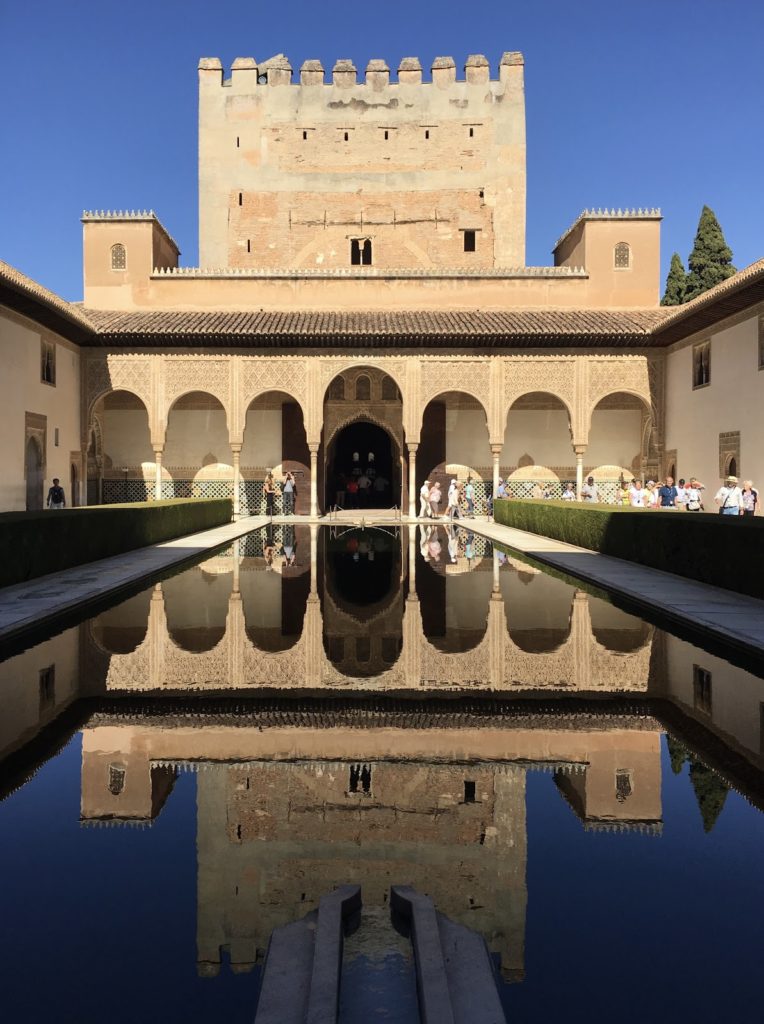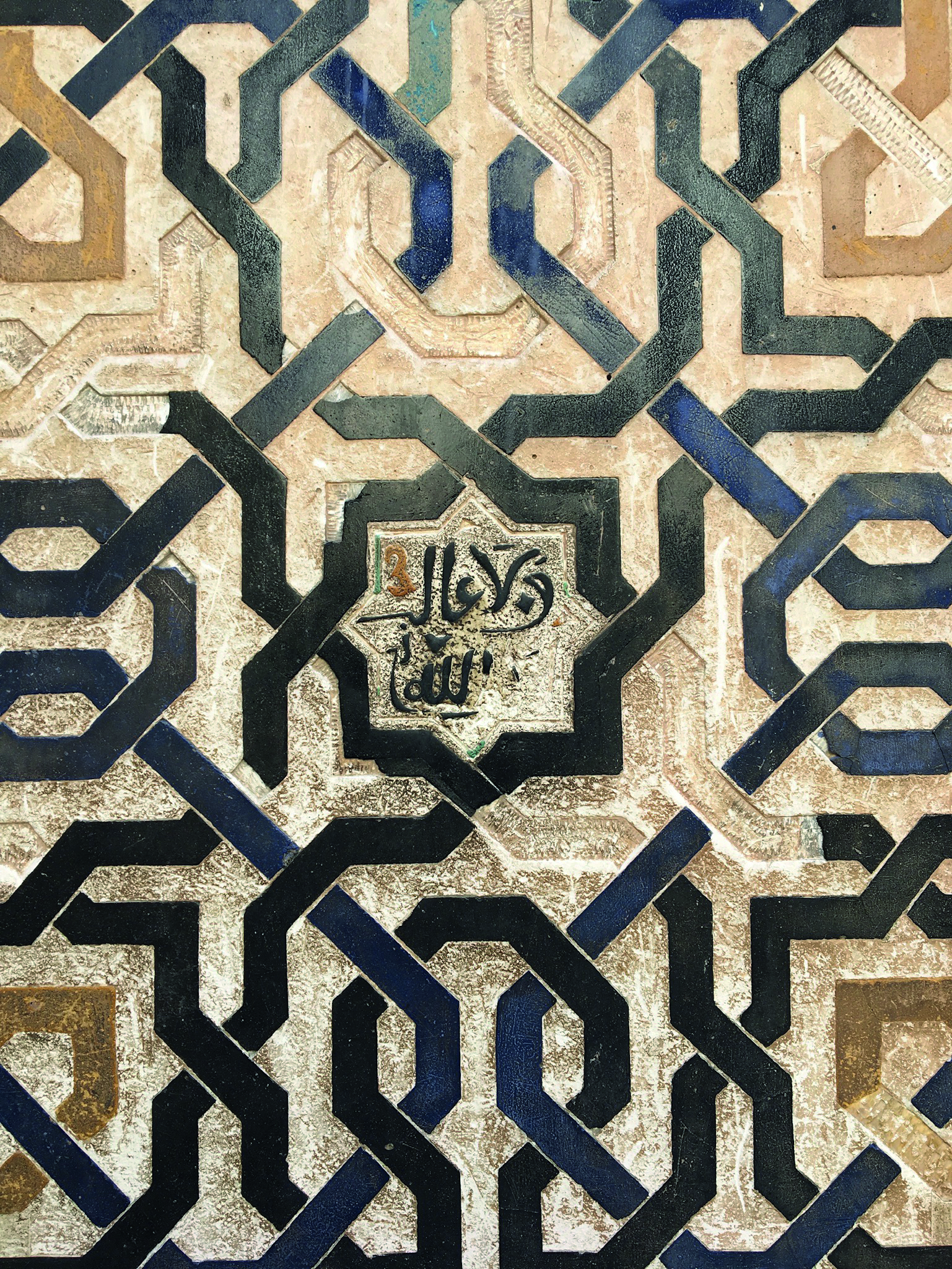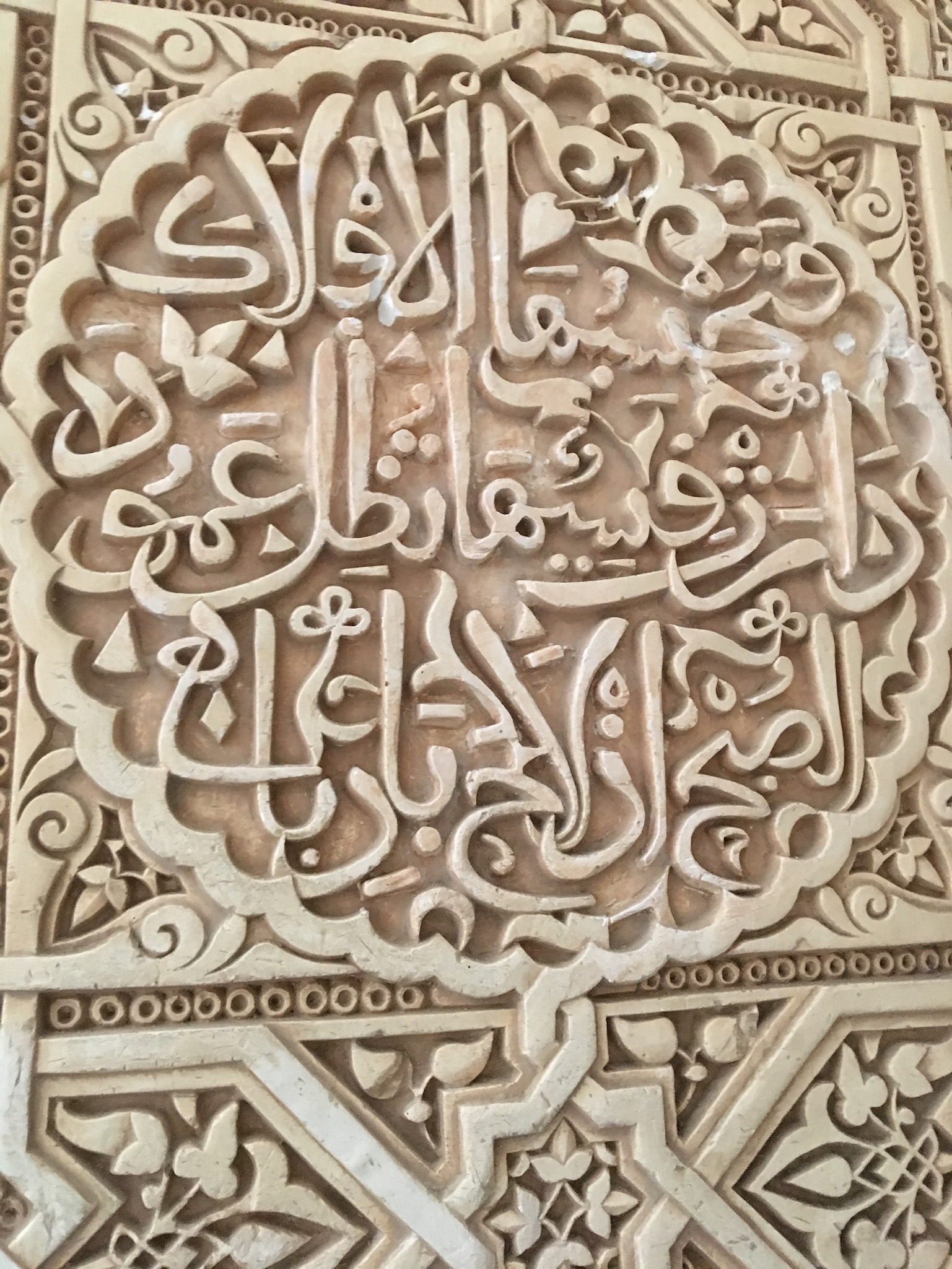Walking through the Great Mosque of Kufa in Iraq, the Hassan II Mosque in Casablanca and the Selimiye Mosque in Turkey, we find that what began as artistic drawings and symbols evolved into phonetics, alphabets and eventually the Arabic language.
Calligraphy is a very ancient art form dating back to the time of the appearance of the Quran, which was given to people with the most beautiful handwriting copy. In addition to its artistic and aesthetic merit, it has a deep philosophical meaning and holds a certain intellectual value which often cannot be grasped from other forms of art. Widely integrated in design and architecture across the Arab world, calligraphy plays an important role in both human and cultural heritage and allows this to be passed on from generation to generation.
Far more than just writing on the wall, the meaning behind calligraphy contributes to the cultural significance of the landmark. Words such as ‘peace,’ ‘happiness,’ ‘blessing’ and ‘fortune’ are inscribed in many Mosques. This is a reflection of the values and beliefs endorsed by the Quran.
UNESCO now seeks to register Arabic calligraphy as intangible heritage, following the announcement made by the Saudi Arabian Minister of Culture that 2020 is the year of Arabic calligraphy. This would ensure the preservation of one of the richest aspects of Arab and Islamic cultural identity.
“We need to popularise calligraphy…open museums and schools of calligraphy, organise exhibitions, hold competitions, and introduce neat writing and calligraphy into compulsory school subjects,” said Alexey Shaburov, The World Calligraphy Museum director.

The notion of calligraphy as an art form derives from the Islamic law that prohibits figurative representation. Drawing and painting was forbidden, and so aside from architecture, artistic talent and passion could only be captured through reading, writing and music. Calligraphy thus became an essential tool for expression, and nowadays it continues to inspire and influence many modern artists, especially in street art and graphic design.
Arabic calligraphy is now being developed digitally through platforms such as Kaleam which revolutionise the script. The technology is able to imitate the hand movements of professional calligraphers when drawing glyphs on the paper and create authentic designs.
There are no major or minor arts. Each type of art enriches our life, bringing its own special colour into it,” added Shaburov. “In fact, there is an interconnection, a mutual attraction between different types of art.”

[Credit: Natasha Dangoor]
Iranian calligrapher Bahman Panahi discovered his curiosity for calligraphy and music from early childhood. Later, while working on his doctoral dissertation at the Sorbonne University in Paris, he combined these two passions and developed a unique art style taking inspiration from text and melody. He coined the term ‘musicalligraphy’ which gained widespread recognition.
Calligraphy is not the only form of visual representation depicted in Islamic architecture. Such architecture is characterised by its vibrant colours, ornate patterns, ceilings of fine sculpture and grand archways. The reflective water in the Alhambra Palace multiplies our view of the magnificent architecture and represents calmness and harmony, whilst La Giralda, the bell tower of the Seville Cathedral, is one of the Almohads’ greatest architectural legacies in Spain.
The fascination with perfect geometry is illustrated in the intricately designed mosaic forms, often alluding to power. In the Real Alcázar de Sevilla in one of Felipe II’s rooms, we find a peacock which is a symbol of an immortal bird of paradise, representing the monarch’s power. On the ceiling of the Chamber of the Catholic Kings, the coat of arms represents all of the kingdoms of the Iberian Peninsula: Castile, Léon, Aragon and the Two Sicilies. The pomegranate design also represents the victory of the war against Granada in 1492.
Art and architecture in the Islamic realm create a unique experience that differs greatly from that of modern Western culture. Through visiting the architectural wonders of the Moorish world, we are able to grasp their intricacy and cultural and historical worth.




